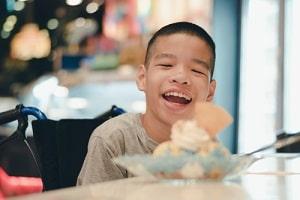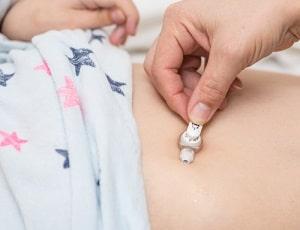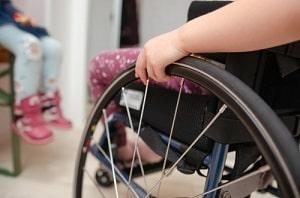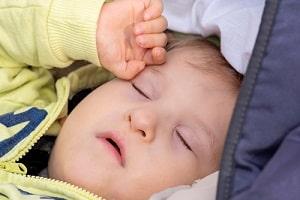Chicago, IL 60601
FREE CONSULTATIONS 312-462-4200
TOLL FREE 833-462-4200
Recent Blog Posts
How Can Induced Labor Through Pitocin Use Lead to Birth Injuries?

Even though childbirth is a commonplace event, it can still be dangerous. Multiple different types of complications can occur during labor and delivery, and they should be addressed properly to prevent birth injuries to children or maternal injuries to the mother. One issue that can increase the risk of injury is the use of drugs to induce labor if a woman does not go into labor on her own, and it is past her due date. While Pitocin is commonly used for this purpose, it has been found to cause complications related to hyperstimulation of the uterus.
When Is Pitocin Used?
Pitocin is a synthetic form of the hormone oxytocin, which induces contractions in the uterus. Pitocin may be used to induce labor in pregnancies that have progressed beyond 40 weeks, and it may also be administered to speed up labor or help avoid complications if labor has stalled. Pitocin will only be effective if a mother’s cervix is favorable for labor and has begun to soften and dilate.
How Can Botox Injections Help a Child With Cerebral Palsy?

Since cerebral palsy (CP) can affect a child in many different ways, parents will no doubt be considering everything they can to address these ongoing health concerns and ensure that their child receives treatment that will allow him or her to live a healthy and fulfilling life. Botox injections are one treatment that has been used to address muscle spasticity, stiffness, and pain. In addition, they may help children with CP improve their ability to walk and increase their range of motion.
Using Botox to Treat Spasticity
Botulinum toxin has a variety of medical uses, and under the brand name Botox, it is most well-known for its cosmetic uses to decrease facial wrinkles. When injected into the muscles, Botox can cause partial paralysis and weaken muscle movements. This can reduce muscle spasms, and it can help children gain more control over their movements while also addressing the pain caused by muscle tightness and spasticity.
What Is Preeclampsia, and How Can it Lead to Birth Injuries?

There are many different health concerns that can affect a mother and her child during pregnancy, labor, and delivery. High blood pressure experienced by a pregnant mother, which is known as preeclampsia, is one serious condition that can lead to birth injuries. This complication will usually occur after 20 weeks of pregnancy, and a mother may also experience this condition immediately after giving birth. Preeclampsia should be recognized and addressed promptly by medical professionals to protect the health of both the child and the mother.
Complications Related to Preeclampsia
While the causes of preeclampsia are not fully understood, it may occur when the blood vessels in the placenta do not develop properly, restricting blood flow to the fetus. Genetic factors, nutritional issues, and body fat may also play a role in a mother’s high blood pressure. Symptoms of preeclampsia include headaches, vision problems, abnormal swelling in a mother’s hands or face, and pain in the upper abdomen. Tests that can be performed to diagnose preeclampsia include measurement of protein levels in a mother’s urine and blood tests to measure platelet levels or look for the presence of chemicals that indicate impairment of kidney or liver functions.
What Is Dysphagia, and How Can it Affect a Child With Cerebral Palsy?

Children with cerebral palsy may experience a wide variety of physical and mental impairments that affect their health and well-being and their ability to live a normal life. Difficulty with swallowing foods and liquids is one issue that commonly affects those with CP, and this condition is known as dysphagia or oral-motor dysfunction. Parents of children with CP will want to understand how this issue may affect their child and the steps they can take to ensure that their son or daughter receives the proper nutrition while avoiding further injuries.
What Causes Dysphagia?
Young people who suffer from cerebral palsy may have limited muscle control, making it difficult for them to move food from their mouth, through their esophagus, and to their stomach. Oropharyngeal dysphagia may occur due to abnormal development or weakness of muscles in the mouth and throat. Esophageal dysphagia may occur because of malformation of muscles in the esophagus, causing food to become dislodged after it is swallowed and before reaching the stomach.
Will My Child With Cerebral Palsy Need to Use a Feeding Tube?

If your child suffers from cerebral palsy, you will want to understand how you can provide the best care for your son or daughter. One issue that parents may be concerned about is whether their child will need assistance with feeding and nutrition. Studies have found that within their first year of life, 57 percent of children with cerebral palsy have problems with sucking, and 38 percent have problems with swallowing. In addition, over 90 percent of children with CP have significant oral motor dysfunction. Because of these issues, children may require intervention to ensure they receive the proper nutrition, and in some cases, a feeding tube may be necessary.
G-Tube Placement
Feeding tubes that deliver food and liquids directly to a child’s stomach are known as gastronomy tubes or G-tubes. A surgical procedure will be performed to create an opening known as a stoma in the abdomen and the wall of the stomach, and the tube will be inserted through this opening. A child will usually be placed under general anesthesia during this type of surgery. Depending on the child’s needs and whether other surgical procedures need to be performed at the same time, laparoscopic techniques may be used to insert the tube through small incisions, or open surgery involving larger incisions may be necessary.
What Are the Benefits of CBD Oil to Treat Cerebral Palsy Symptoms?

Parents of a child with cerebral palsy (CP) will want to do everything they can to help their child grow and develop successfully. While there is no cure for CP, there are a variety of treatments that can address a child’s symptoms, alleviate their discomfort, and allow them to move and function as well as possible. One potential treatment that may benefit children is taking CBD oil derived from marijuana or hemp.
CBD Versus Medical Marijuana
Many states allow the use of marijuana for medical purposes. However, patients will usually need to receive authorization from a doctor, and they must purchase medical marijuana from a licensed dispensary. CBD oil, on the other hand, is often available over the counter from a variety of sources, depending on state laws and regulations.
Is Leg Lengthening Surgery a Safe, Effective Cerebral Palsy Treatment?

Parents of children with cerebral palsy often face an overwhelming amount of information. Fully understanding how this condition has affected their child’s growth and development can be daunting, and making choices about the types of treatment a child should receive is often difficult. When surgical intervention is recommended to lengthen the muscles or tendons in the legs, parents should thoroughly discuss this option with medical providers to determine whether it will be an effective treatment for their child and whether it will cause any complications in the future.
Orthopedic Surgery Options and Considerations
In some cases, leg lengthening surgery may be used to correct a difference in length between a child’s legs, or it may help address spasticity or severe muscle contracture, improving a child’s gait and allowing them to walk independently. Surgery may also be recommended after a patient has undergone a selective dorsal rhizotomy (SDR).
What Winter Boots Work Best for a Child With Leg Braces?

Children with cerebral palsy (CP) may require a wide variety of treatments and assistive devices. Leg braces are often used to improve mobility and correct deformities, but while these devices can provide a number of benefits, they also present challenges for parents and children alike. As the winter months approach, parents may be wondering about their options for winter boots that will provide children with protection from the elements while fitting over braces and allowing for easy, comfortable movement.
Footwear and Orthotics
Braces worn on the feet and legs are known as orthotics, and these devices can help address the issues experienced by those with CP, such as rigid muscles, spasticity, or low muscle tone. Orthotics can provide support and stability and improve a child’s ability to sit, stand, and walk. They can also be used to correct or prevent deformities in the muscles and bones, and they can help improve muscle strength and reduce missteps, hyperextensions, and accidents.
Is Trileptal Safe for Treating Seizures in a Child With Cerebral Palsy?

Complications during labor and delivery can lead to different birth injuries, such as cerebral palsy (CP). Children with cerebral palsy may experience a variety of symptoms that affect their movement, cognitive function, and many other areas of their lives. Epilepsy is a common condition that is related to cerebral palsy, and between one-third and one-half of people diagnosed with CP experience some form of seizures. While different medications are available to treat epilepsy, parents will want to make sure these drugs are safe for their children to use.
Treating Seizures With Anticonvulsant Medications
Children with cerebral palsy can experience multiple different types of seizures. These include tonic-clonic seizures that cause a child to suffer a complete loss of motor functions and experience convulsions in the muscles, as well as confusion that can last up to a few weeks after a seizure. Partial complex seizures can also occur, and while these do not involve convulsions, they may lead to a partial loss of consciousness and temporary impairment to walking or other motor functions.
What Can I Do if My Child With CP Has Trouble Sleeping?
Cerebral palsy (CP) refers to a neurological condition or disorder that affects an individual’s muscles and movement. This can manifest in several different ways, from spastic movements to hearing loss to the inability to walk without assistance. In many cases, it inhibits a person’s ability to move and maintain balance and posture. CP is generally caused by abnormal brain development or damage to a developing brain in utero. This type of injury can be caused by a lack of oxygen during prolonged labor and other complications during childbirth. One of the many issues that CP sufferers face is trouble sleeping, and this is especially evident in children who have CP.
Tips for Bedtime
Parenting can be exhausting no matter what, but for parents who have a special needs child, it can take an even bigger toll. Daily routines are important for creating and maintaining healthy habits, including sleeping at naptime or bedtime. Seizures, muscle spasms, pain, breathing difficulties, or gastrointestinal issues can all inhibit sleeping patterns in younger people with CP.






